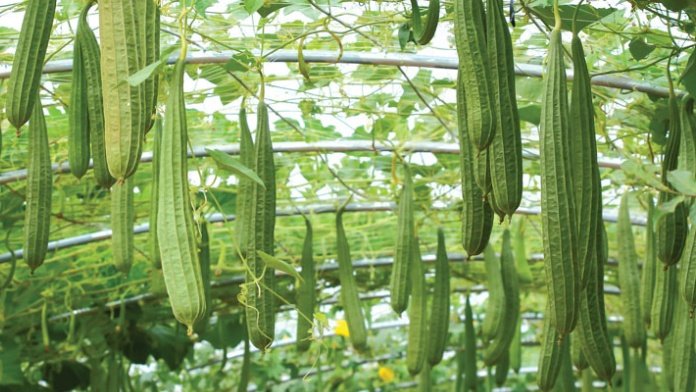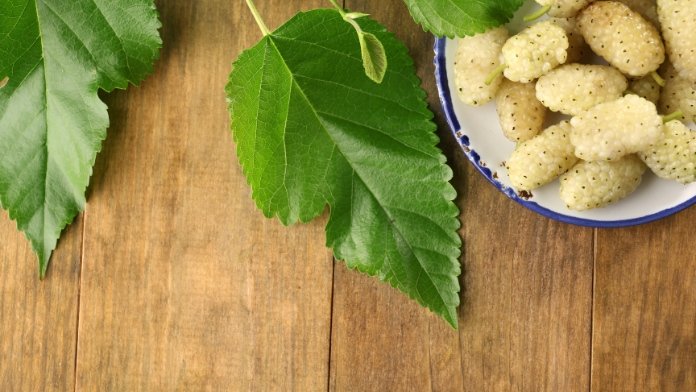How To Care And Grow Bonsai Seedlings: Perfect for plant lovers
September 27, 2024 | by Noor Nahar Tarin

Growing bonsai seedlings is an excellent way to bring nature into your life and create something beautiful. A Bonsai tree is a miniaturized version of these trees that grows in a small pot. They appear to be large trees, only miniature. You can put them on a table or windowsill to manage the greenery inside. You read that right: you can grow Bonsai from young plants. It’s a lot of fun and easy, and what a perfect way to start learning about plants!
This article will discuss the basics of bonsai seedlings and how to grow and care for them. You will also discover how growing bonsai seedlings is unlike any other plant and why it brings you closer to nature.
What Are Bonsai Seedlings?
Bonsai seedlings are the baby trees that grow Bonsai. They grow from seeds like all regular trees. When you plant a bonsai sapling, it will take a long to grow, but in the meantime, you can give it a shape as beautiful as a small tree.
In Japan, Bonsai translates to “planted in a container.” So, while bonsai trees are small, they are miniature replicas of full-size trees. There are various plant species, from maple or pine to even cherry, that you can grow to create this type of art.
Where the seeds are found
If you’ve decided that miso is for you, you’ll need to start by getting the seeds. Bonsai is the ancient Japanese art of training and pruning a plant that is planted in a container; therefore, there are no special seeds for bonsai plants. You need seeds from a typical plant to start the process. There are two ways to get seeds. The first is to collect them locally, which is the easiest route for beginners. The best time to collect seeds is late summer or early fall.
Collecting seeds for Bonsai
If you want to grow conifer bonsai, collect the cones from the tree. Make sure they are brown and closed. The green cones have not matured, and the open cones have probably already lost their seeds. Take the pineapple home, spread it out on a tray, and store it in a dry, warm place. Pine cones should be dried and split open so that the seeds can be released. If you have difficulty removing the seeds, use tweezers to remove them carefully.
Why Grow Bonsai Seedlings?
Bonsai seedlings are immensely satisfying to grow. Your tree will grow and change right before your eyes. For one, they are a form of living art. They can be molded and changed in design through pruning (cutting branches) and wiring (bending the branches).
This is what makes growing bonsai seedlings so unique, and here are a few reasons why
Connection to Nature
With Bonsai, you learn how to grow and care for a plant over time, which makes you feel closer to nature.
Relaxing
A bonsai tree is very therapeutic to take care of. It’s the best way to unwind after a long day!
Creativity
Your bonsai design can be what you decide. All the trees are becoming unique works of art.
Learning Patience
As the bonsai seedlings grow, you learn to be more patient because you must wait until your tree matures.
How to Start Growing Bonsai Seedlings
Starting your bonsai tree from seedlings may seem complicated, but it’s simple! Just follow these steps:
Step I: Select the best possible Bonsai Seedlings.
The first thing you do to grow a Bonsai plant is select the type of tree for your Bonsai. However, Some trees are much easier to develop as Bonsai than others. Some of the most common ones for beginners are:
Step 1: Choosing the Right Bonsai Seedlings
Maple: Known for their stunning fall foliage
Pine: Pine trees are cone-bearing, evergreen trees.
Cherry Blossom: These trees have beautiful flowers in the spring.
Juniper is a durable, low-maintenance tree, and its resilience makes it ideal for novices.
When purchasing bonsai seedlings, look for individuals that appear healthy and vigorous. The characteristics of the seedlings are green leaves and have strong stems. Try to avoid any seedlings that seem weak with yellowing leaves.
Step 2: Planting Your Bonsai Seedlings
After you receive your bonsai seedlings, then it is finally time to plant these into a marijuana. A bonsai pot is required, and it should have holes at the bottom to allow excess water to drain. How to Plant Bonsai Seedlings
Get The Pot Ready: Let the mesh screen cover the drainage holes to keep the soil from falling out.
We are adding Soil: Special bonsai soil mix water draining. Then, put some soil halfway up the pot.
Step Three: Plant the Seedling Carefully remove your bonsai seedling from its container and gently loosen the roots. Then, put it in the middle of the pot.
Then, Add More Soil. Fill the roots with more soil while keeping a little space in the pot.
Mist the Cloud: Water your bonsai seed properly after you have planted it. For more information on growing or acquiring trees, browse through Bonsai Growing-helper. Just be sure to let stray water out of the drainage holes.
Step 3: Taking Care of Your Bonsai Seedlings
Bonsai seedlings require special care to develop into healthy trees. Some critical care tips for seedlings are:
Watering: Water bonsai seedlings when the soil feels dry to the touch. I wanted to upgrade the blog on how my plants were doing, but this rabbit hole of constantly changing schedules got in the way. Watering your bonsai tree with just enough water is essential to keep it healthy.
Sunlight: Bonsai seedlings are like other plants—they love sunlight. Plant your tree somewhere it receives at least 4-6 hours of sunlight daily.
There is also pruning: during growth, the branches will be cut at your bonsai divers (to maintain their size). Pruning helps the tree grow properly and stay healthy.
Fertilizing: Your bonsai seedlings will benefit from a liquid fertilizer applied during the growing season (spring and summer). Reducing this will allow the tree to establish a robust, healthy root system.
Shaping your Bonsai
Shaping a bonsai tree is one of the most satisfying parts of growing it. There are two primary methods for styling: pruning and wiring your Bonsai.
Pruning: When you prune, remove unwanted parts of bonsai plants but leave the low with leaves in a specific shape. These should be trimmed with sharp scissors or pruners. Cut small; never remove a lot at the same time.
Use of wiring: Wrap the thin wire around the branches and bend it as you like. But be careful not to wind it around the limb too tightly, and you’ll live with a girdled pine.
For one thing, remember that creating your Bonsai is an art. Take as long as you want, and have fun with the procedure!
Bonsai Seedling Growing Challenges
Bonsai seedlings can have a hard time, just like any other type of plant. But don’t worry! With the proper care, your Bonsai will do well. So, here are the five issues that are generally faced, along with how to eliminate them.
Yellow leaves: The parts of bonsai seedlings’ leaves that turn yellow can be a symptom of overhydration or underwatering. Ensure that you water the tree correctly and that it has enough of a drainage hole.
Pests: Insects such as aphids and spider mites could infest bonsai seedlings. Check the seedlings regularly for pests and spray them with an insecticide; I use natural ones.
Root Issues: Bonsais require room to cultivate their roots. If your bonsai seedlings are not doing well, it could be time to transplant them into a larger container.
The Unique Joy of Growing Bonsai Seedlings
The connection you build with your tree over time. It makes growing bonsai so unique. As you care for your Bonsai, you will see it grow, change, and feel accomplished. Seedlings also bring nature into your home, making your space more peaceful.
How to Find the Perfect Bonsai Seedlings
So now you know how to grow bonsai saplings, find a suitable tree! Choosing Bonsai Seedlings: When buying bonsai seedlings, there are a few things to consider:
Your Environment
Bonsai trees like sunshine and require plenty of water, but some prefer shade. Consider where you will keep the tree tended and choose a type of Bonsai bloom most likely to thrive in that area.
Your Level of Experience
For beginners, find something easy to grow, such as junipers and pine trees. As you improve, move to more difficult trees like a maple or cherry blossom.
Your Style
There are many shapes and sizes of a bonsai tree. Would you like a tall, graceful tree or a stubby, shrub-like one? Pick an appropriate bonsai seed that goes well with your viewing.
Where to Buy Bonsai Seedlings
It can be purchased online from garden centers or plant nurseries. You choose a supplier specializing in bonsai plants and not buy bonsai seedlings from other plant sellers. This ensures that you are buying healthy and top-quality seedlings.
FAQ
How long it takes for a bonsai seedling to flower into a tree?
Bonsai trees grow slowly. A single bonsai seedling can take years to develop into a complete tree. The good thing is — caring for your plant and watching it grow can be just as satisfying!
Is It Possible To Germinate Bonsai Saplings Indoors?
Bonsai seedlings can be grown indoors. Just be sure that they have adequate sunlight and water. Certain bonsai trees, like junipers, might be better off outdoors.
How frequently should I water my bonsai seedlings?
Bonsai should be watered when the soil is dry to the touch. Do not water them too much or too little. Some of the most critical elements when caring for this elegant foliage plant include keeping its soil moist and never watering it.
Can Bonsai Seedlings Be Grown From Seeds?
Yes! You can begin a bonsai tree from seed, but be prepared to wait. You can choose some Bonsai Seedlings if you need more patience to start with an adolescent tree.
Equipment that is used in caring for Bonsai seedlings
You may require some tools to tend your seedlings, such as an illustration, pruning shears, scissors, and some wire to shape the branches.
Conclusion
Bonsai trees are a great way to incorporate nature into your life. Growing Bonsai from seed can be very rewarding. Bonsai trees are a beautiful and soothing hobby that can be enjoyed by the professional or beginning gardener.
RELATED POSTS
View all


